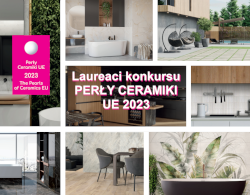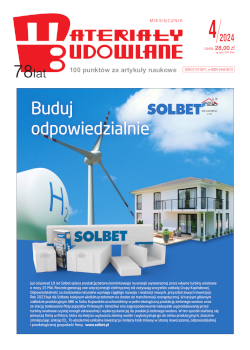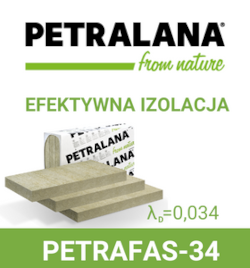dr hab. inż. arch. Zbigniew Bromberek, prof. nadzw Politechnika Poznańska,Wydział Budownictwa i Inżynierii Środowiska
Autor do korespondencji e-mail : Ten adres pocztowy jest chroniony przed spamowaniem. Aby go zobaczyć, konieczne jest włączenie w przeglądarce obsługi JavaScript.
DOI: 10.15199/33.2017.01.13
Wiedza o komforcie budzi obecnie niewielkie zainteresowanie, ponieważ dostępne informacje są nieadekwatne do potrzeb. Ponadto rozpowszechniane są obiegowe opinie wynikające z braku zrozumienia specyfiki solarnych budynków pasywnych, np. dosyć powszechnie uważa się, że budynki, które nie zostały wyposażone w systemy klimatyzacyjne, nie są w stanie dostatecznie i skutecznie zmodyfikować parametrów klimatycznych zimna lub gorąca i wilgotności do poziomu, który byłbymożliwy do przyjęcia
Literatura
[1] ASHRAE (American Society of Heating, Refrigeration and Air-conditioning Engineers), Handbook of fundamentals (SI edition). 1985. Atlanta.
[2] Auliciems A., S. V. Szokolay. 1997. Thermal comfort, ANZAScA, Brisbane.
[3] Baker N. V. 1993. „Comfort in passive buildings”. Proceedings of the CEC symposium ‘Solar energy and buildings”. Athens.
[4] Bromberek Zbigniew. 1999. „Tourists and attitudes to air-conditioning in the tropics”. Climate Research 13 (2): 141 – 147.
[5] Bromberek Zbigniew. 2002. „Sustainability, architecture and comfort: a biotechnological model of environmental adaptation”. Proceedings of the Sustainable Building 2002 International Conference. Norwegian EcoBuild Program, Oslo.
[6] Bromberek Zbigniew. 2009. „Eco-resorts, planning and design for the tropics”. Architectural Press, Oxford.
[7] Fanger P. O. 1970. „Thermal comfort”. Danish Technical Press, Copenhagen.
[8] Forwood B. S. A. 1980. „The use of computers for modelling the physical environments in buildings” w Cowan H. J. (red.) Solar energy applications in the design of buildings, Applied Science Publishers, London, 143 – 169.
[9] Givoni B. 1976. „Man, climate and architecture” (2. wyd.), Van Nostrand Reinhold, New York.
[10] Humphreys M. A. 1978. „Outdoor temperatures and comfort indoors”. Building Research and Practice No. 6 (2): 92 – 105.
[11] Koenigsberger O. H., T. G. Ingersoll, A. Mayhew, S. V. Szokolay. 1973. „Manual of tropical housing and building”. Part one: Climatic design, Longmans, London – New York.
[12] Littlefield D. (red.). 2008. Metric handbook, planning and design data (3. wyd). Architectural Press, Oxford.
[13] Macpherson R. K. 1980. „What makes people accept a thermal environment as comfortable” w Cowan H. J. (red.) Solar energy applications in the design of buildings, Applied Science Publishers, London.
[14] Olgyay V. 1992. „Design with climate”. Van Nostrand Reinhold, New York, 1963 re-print.
[15] Szokolay S. V. 1985. „Thermal comfort and passive design” w Boer, K i Duffie, J (red.) Advances in Solar Energy Vol. 2, American SES & Plenum Press, New York, 257 – 296.
[16] Tombazis A. N. 1993. „Architecture and bioclimatic design”. Proceedings of the CEC symposiumSolar energy and buildings: 8 – 10December 1993, Athens.
Otrzymano : 07.12.2016





























